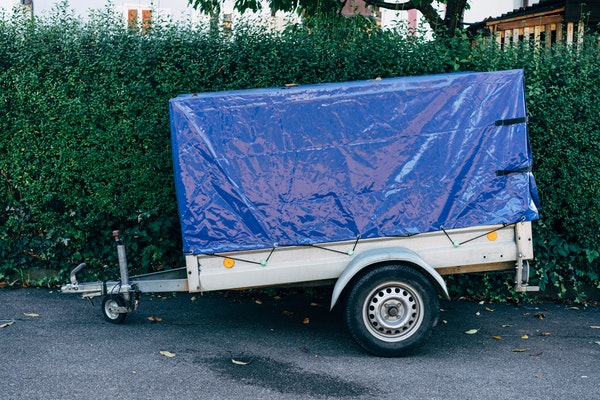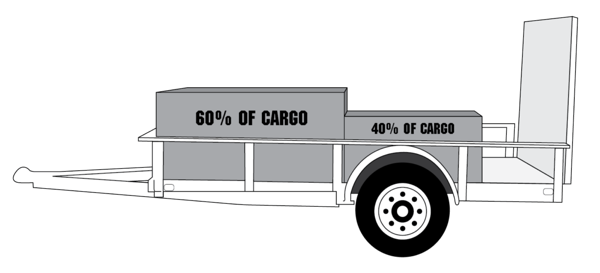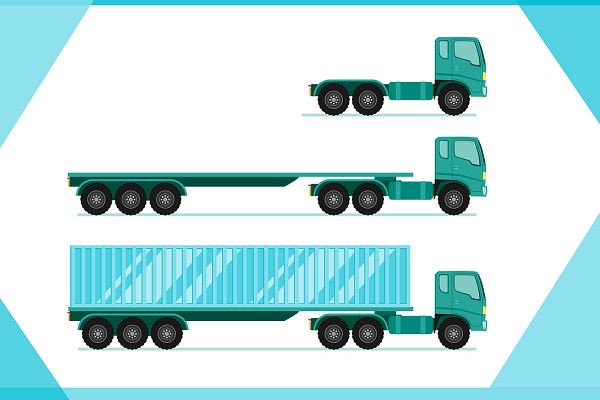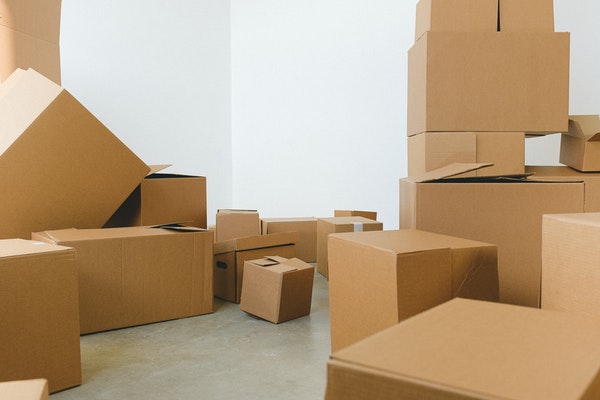How to Load a Trailer Correctly
If you don’t know how to load a trailer correctly, we’re about to make your life a lot easier. This is the ideal guide to save you hours of wasted effort and prevent you from making costly rookie mistakes.
Knowing how to load a trailer correctly is essential for safer towing. Otherwise, you run the risk of losing control and causing a wreck. Besides endangering your own life and the lives of others around you, you might also face legal consequences.
There’s a lot to know on how to load a trailer correctly to haul on your next trip. The stress and the level of information overload might prevent you from achieving the level of focus you need.
That’s why we’ve condensed our years of experience and training into this quick and practical reference guide.
Whether you’re hauling cement blocks and tools around your property or moving your mattress across town, we’ve got you covered. Continue reading and you’ll learn how to load a trailer correctly like a pro in no time.

Before You Load That First Box
It’s tempting to collect a slew of random, empty boxes from the grocery store and the back of your favorite home goods store. However, there is a good reason to get boxes from a moving company: they are sturdy and uniform, allowing for easy stacking.
Check How Much You Can Tow
Improperly loaded trailers are among the leading causes of trailer accidents each year. Before loading a trailer, make sure to check its weight capacity.
The full weight of the items loaded on the trailer must not exceed the trailer’s gross towing mass (GTM). The rated towing capacity of the towing vehicle or the tow bar and coupling combination must not be exceeded by the combined trailer and load.
The ATM cannot exceed 750 kg or the towing vehicle’s mass if the trailer is not equipped with brakes (whichever is the lower value). A safety chain must also be attached to trailers with an ATM of no more than 2500kg. Two safety chains are required for trailers with an ATM of more than 2500kg.
How to Load a Trailer Correctly in 7 Steps
Follow these 7 steps to load your trailer in the best way possible.
1. Place Your Trailer on a Flat Surface Area
Make sure your trailer is positioned on a level surface to begin. Once the loading begins, if it is not level, it may shift or even tip. In addition to being on flat ground, be sure there is enough room for your vehicle to be hitched up.
2. Make Use of Wheel Chocks
As you can probably tell, making sure your trailer is properly stabilised is an important part of how to load a trailer correctly. Wheel chocks are recommended to help stabilise your trailer while it is being loaded.
Chocking the wheels is key to ensuring your trailer stays put and won’t roll when you try loading cargo onto it. Furthermore, it will aid in preventing shifting once weight is added to the trailer.
Before loading, you can also hitch your trailer to your vehicle. Then, with the vehicle in park and the emergency brake engaged, you can help maximise the trailer’s stability.
3. Use the Proper Weight Distribution
Take a quick inventory of your cargo and make a rough plan of where you’ll put everything in the trailer before loading anything. A good rule of thumb to follow is the 60/40 rule.
The trailer load should be 60 percent in front of the axle and 40 percent behind it. This will guarantee that the tongue weight is correct in order to prevent trailer sway. The tongue weight is the percentage of the trailer’s weight that is transferred to your tow vehicle via the trailer tongue.

4. Load the Heavy Stuff First
Putting your heavier stuff on the trailer first can help you follow the 60/40 rule, which is important for safe towing. Starting with the largest and heaviest objects is the best approach to ensure correct weight distribution.
Place your bulkier goods in front of the axle. Then, to evenly spread the weight, start moving smaller and lighter items around.
5. Use Straps to Tie Down Large Items
After you’ve loaded your trailer with your bulky items, secure them to the trailer’s tie-down anchors. This can be accomplished with rope, chain, or ratchet straps. Please keep in mind that this is not a step to skimp on!
Ensure that everything is properly fastened and will not come loose while being dragged as much as possible. After you’ve double-checked that everything seems tight, tie off the excess to prevent it from dragging or being trapped in the wheels.
6. Place Light Cargo on the Top
See what lighter cargo can fit in the open nooks or even on top of the larger cargo, keeping safety in mind. By lightweight cargo we mean things like small equipment or supplies, as well as leaves or yard waste.
This lightweight cargo could also be small yard working equipment or handheld tools and supplies. Putting these items in a container together, in either case, makes them much easier to load and locate once you begin unpacking.
7. Hook up your Trailer and Check your Lights
Proceed to the hitch coupling method if your trailer is not yet attached to your vehicle. Check to see if your towing vehicle and equipment are rated to tow the weight of your loaded trailer.
To limit the risk of trailer sway, check the tongue weight as well. After you’ve attached the trailer to the tow vehicle, make sure all of the lights, turn signals, and brakes are operating properly.
Drive carefully and always be prepared
It is possible for something to go wrong when loading and towing a trailer. You can do everything correctly, check off each item on a list, and follow the instructions on how to load a trailer correctly.
Even so, things can go wrong. Make a list of all the tools you think you’ll need and pack them in case the unexpected occurs.


